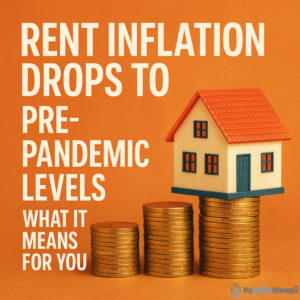For the first time in what feels like a long stretch of unrelenting price hikes, Americans are seeing a slowdown in one of the most burdensome cost categories—housing. According to recent data from the Bureau of Labor Statistics, rent and mortgage-related costs rose just 0.3% in January, a notable shift after years of aggressive increases driven by pandemic-era disruptions.
This deceleration in housing costs isn’t just good news for tenants and homeowners—it’s a crucial turning point in the fight against inflation.
A Sign of Cooling in an Overheated Sector
Housing costs, particularly rent and owners’ equivalent rent (OER), make up about one-third of the Consumer Price Index (CPI). These categories have been among the stickiest contributors to inflation over the past two years, often outpacing wage growth and putting financial strain on millions of American households.
But in January, both categories posted 0.3% monthly increases—a rate that mirrors pre-pandemic averages, offering a glimmer of relief to cost-burdened renters and homeowners alike.
“This is arguably the most encouraging news on the inflation front that we’ve seen in months,” says James Knightley, Chief International Economist at ING. “The slowdown in housing costs could help balance out rising prices in other sectors.”
What’s Driving the Slowdown?
A few key factors may be contributing to the easing:
-
Lagging effect of market rent trends: Market rents have already begun to stabilize or even decline in some cities, and this is now starting to show in official inflation metrics.
-
Slower household formation: As more people double up or move back in with family due to affordability concerns, demand growth has cooled.
-
Increased rental supply: New apartment construction completed in 2023 and early 2024 is hitting the market, giving renters more options and pushing landlords to rein in price hikes.
These trends suggest a broader rebalancing is underway, one that could ripple through the economy and ease pressure on both consumers and policymakers.
Why It Matters for Inflation—and Your Wallet
Rent inflation has been one of the primary forces driving up overall consumer prices. A sustained slowdown in this category could:
-
Help the Federal Reserve justify holding off on further interest rate hikes, which would be welcome news for anyone looking to borrow or refinance.
-
Make room for real wage growth, especially for low- to middle-income households where housing eats up a large share of income.
-
Ease pressure on state and local governments dealing with increased demand for rental assistance and housing support.
However, some economists caution that while the monthly slowdown is promising, year-over-year rent inflation remains elevated. The true test will be whether this softening becomes a long-term trend or just a temporary plateau.
Other Inflation Drivers Still Lurking
It’s also important to note that not all inflationary pressures are easing. Categories like:
-
Used cars
-
Auto insurance
-
Travel and leisure
-
Imported goods (affected by tariffs)
…are still rising and could offset some of the relief from housing. In this context, housing’s cooling may act as a counterweight, helping to stabilize the overall inflation picture.
What Renters and Buyers Should Watch Next
If you’re renting, now might be a good time to negotiate lease terms, as landlords face increasing competition. For those considering homeownership, mortgage rate trends and home price adjustments will be key indicators to follow.
Meanwhile, policy analysts and economists will be watching:
-
Whether this trend sustains over the next six months
-
How regional markets respond, particularly in high-growth cities like Austin, Phoenix, and Tampa
-
What this means for interest rate decisions by the Federal Reserve in late 2025
Source
“The Biggest Driver Of Inflation Is Getting Less Severe” — Investopedia Read the full article here

